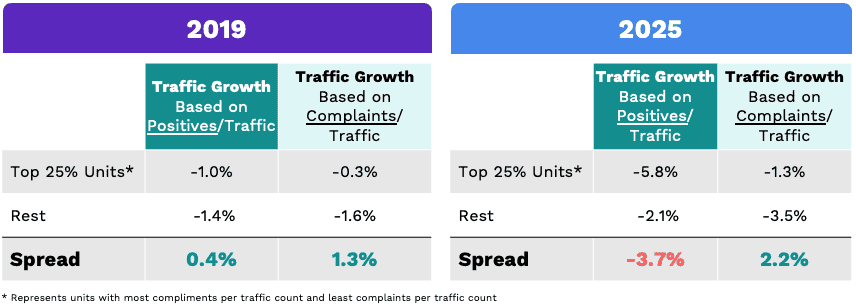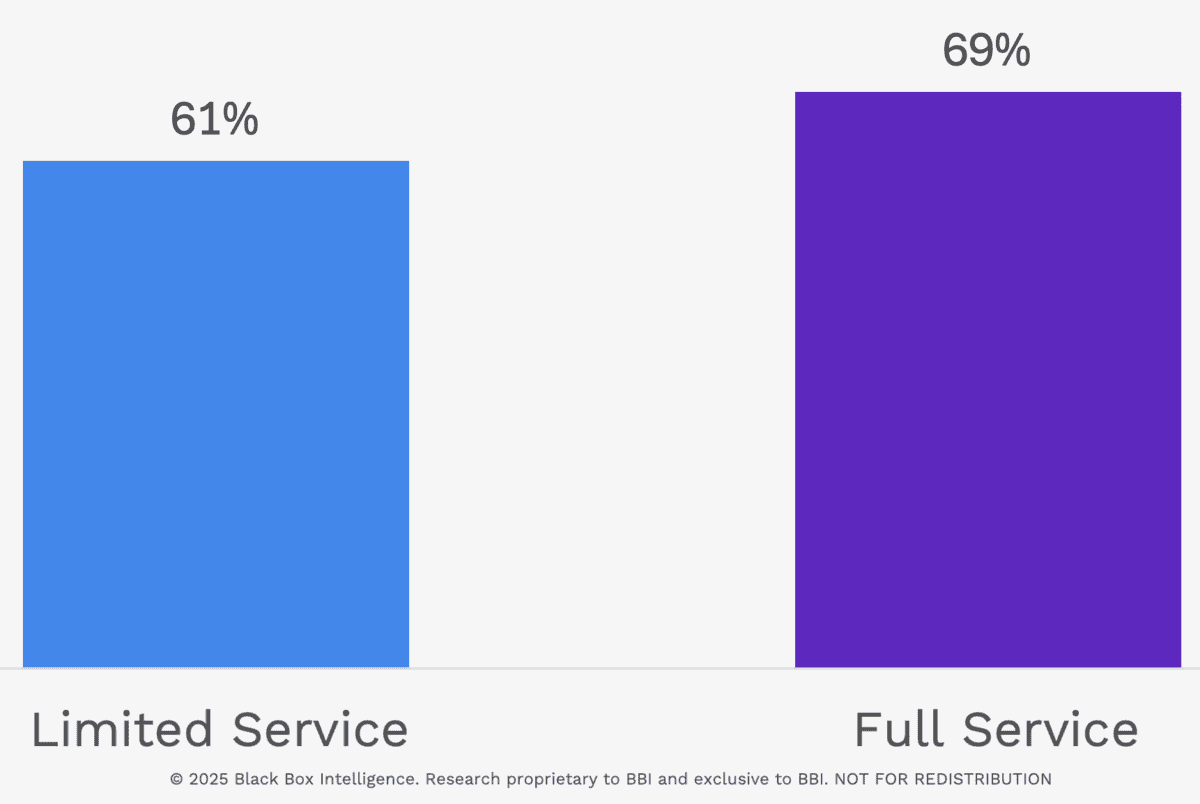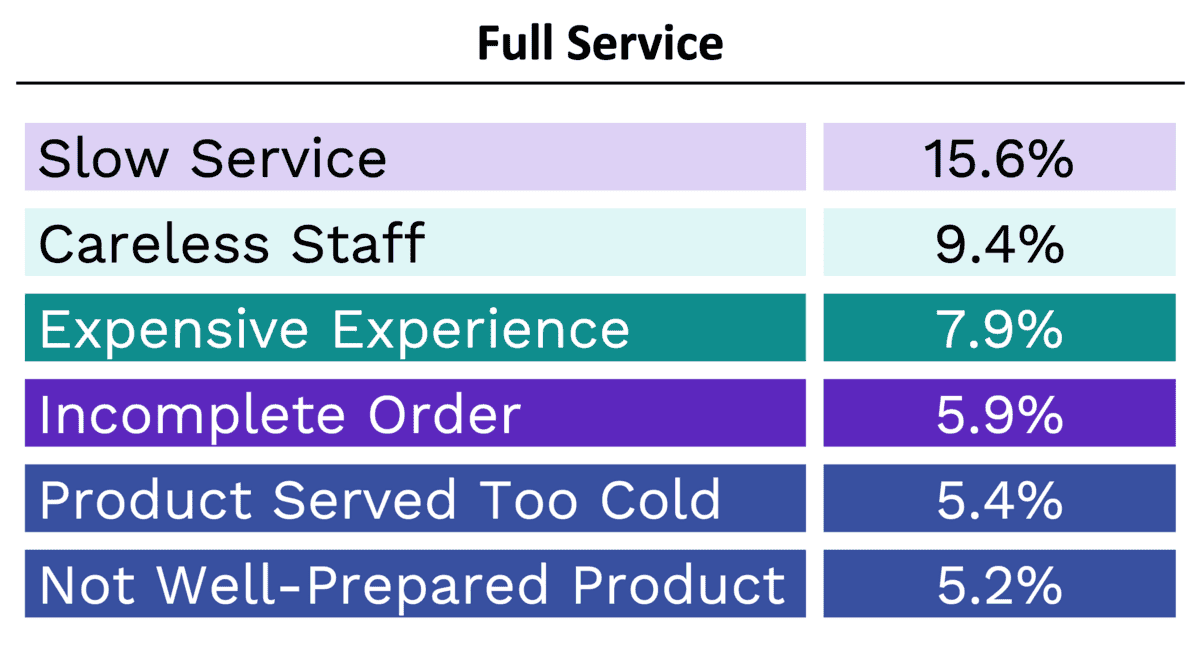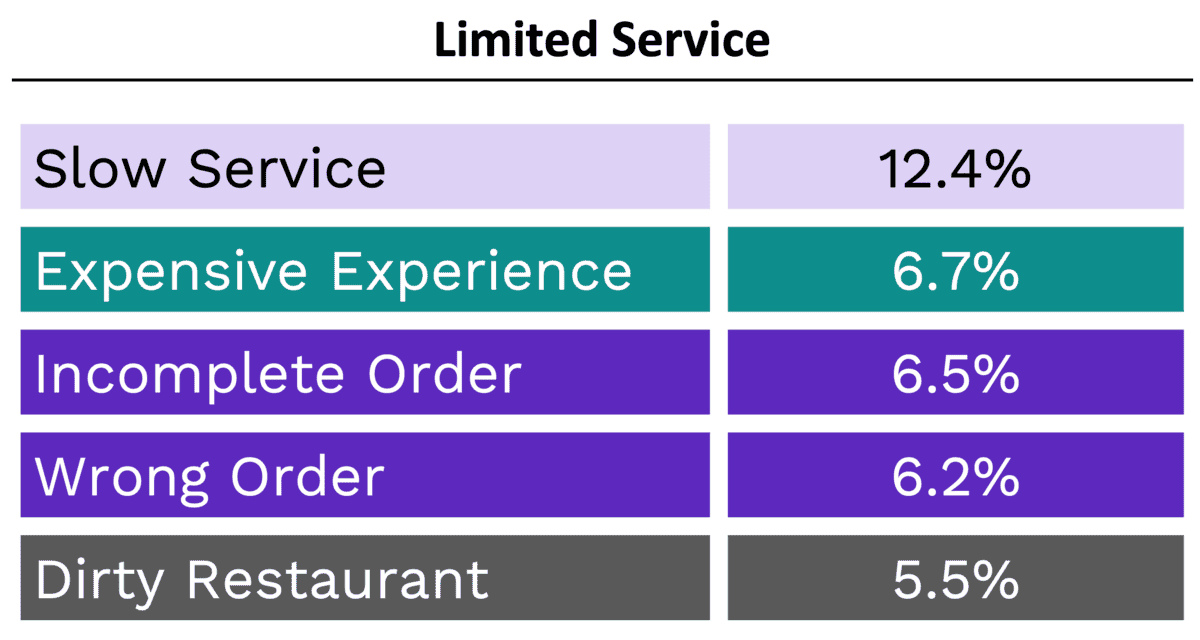Best vs Rest Analysis
Top Performers Learn From ALL Feedback But Particularly Emphasize the Negative
Best vs Rest Analysis: What Top 25% of Restaurant Performers Do That Others Don’t
Top performers aren’t lucky—they’re patterned. In our “best vs the rest analysis”, We compare the top 25% of units by relative comp traffic to the rest using Black Box Intelligence data to surface the specific operational moves that correlate with better guest sentiment and durable traffic. Here, we focus on mining complaints in online reviews and analyzing your complaints to traffic-ratio as a core KPI.
The Performance Lever: Complaint-To-Traffic Ratio
What we see in our data: reducing complaints-to-traffic ratio now tracks more closely with traffic performance than simply generating more compliments.
To be clear: While increasing guest facing ASR is important and tied to average weekly sales. But, as more and more brands solicit reviews, reducing negative insights has become more important than increasing positives for traffic growth.
So: compliments still matter, but complaint density is the lever more likely to move the business nowadays.
Full-Service Traffic Growth; Sentiment Normalized for Traffic Volumes

Based on these numbers, general increases in review volume in recent years has de-valued positive reviews. The units with the best 25% (i.e. highest) positive sentiment-to-traffic ratio experienced +0.4% difference in traffic in 2019. Nowadays, that difference is -3.7% – meaning a delta of -4.1%.
Conversely the 25% of units with the best (i.e. lowest) complaints-traffic ratio experienced +1.3% in traffic in 2019, Now, that difference is +2.2% – a delta of +0.9%.
A significant reversal.
Review Analysis: Where to Start
Top performing brands listen intently to their guests; they recognize that they need good online reviews to attract guests and help with their positioning in online searches. All of this is important, with positive reviews clearly serving an important role in attracting customers to their locations.
But the best are laser focused striving for perfection by eliminating the negatives. The good news is that the information you need to move the needle is at your finger tips.
Percentage of Online Reviews with Text

Bottom line: up to 2/3 of reviews include actionable feedback – which means there’s plenty of content to mine through and establish where exactly the biggest opportunities lie for your brand.
There are plenty of reviews that are “rating only” and don’t include any accompanying explanation.
But the data shows that most guests do take the time to provide written feedback to tell you more about their experience.
And the beauty is that this is mostly unprompted feedback. You are not asking the questions, you are just listening to what they have to say.
This means it is feedback in their own words on their own terms, allowing you to get to the heart of the main issues facing your business.
Surfacing the Actionable Nuggets in ALL Your Reviews
So, you’d think the first place to start for finding useful negative insights would be your 1 and 2 star reviews. And you wouldn’t be wrong. You will likely find plenty of impactful things to fix within these.
But you certainly shouldn’t ignore your positive reviews either. With the right analytics engine, you can surface the key negative themes in your 4 and 5 star reviews.
Think about the context here: these people are generally very happy with their experience. But there are little things that would have made it perfect. And like we see above, striving for perfection is just what top performing brands do.
Even the happiest guests leave clues. Within positive reviews that still include a negative, the most common pain points are accuracy, food execution, price, speed, cleanliness, and staff attitude. These micro-frictions quietly erode loyalty and are easy to miss because the star rating looks fine at a glance. Surfacing—and fixing—them is the operational unlock that separates the best from the rest.
Here’s what negative themes we see in positive reviews industry wide.
Top Negative Themes Among Positive Experiences
(Percentage Represents Complaint Mix Among 4 & 5-star Reviews That Included a Negative)


![]()
In full service, even when the guest is leaving you 4 or 5 stars, about 1 in 6 is complaining about something related to the wait or pace of the experience. There is room for improvement there.
At the same time, 1 out of 10 is saying the staff was careless. Not enough to ruin the experience, but maybe enough for them to rethink where they want to go next time if your competitor across the street has greater attention to detail when it comes to attentiveness.
In limited service, 1 in 8 guests is also complaining about the speed and wait times.
And notice how for both categories a significant percentage may be happy with the experience and the quality of the food they received, but they are definitely not happy with the price.
Current-Time Context: Prices and Patience
Guests are paying more and tolerating less drag in their experience. In August 2025, food-away-from-home prices rose 0.3% month over month; full-service prices rose 0.4%, limited-service 0.1%. That’s fresh pressure on the “worth it” equation and it narrows the margin for error at the table, on the line, and in the lobby.
Consumer mood isn’t helping either. The University of Michigan’s preliminary reading shows consumer sentiment fell again in September 2025, a second straight monthly drop. In a climate like this, patience for mistakes shrinks. Guests still dine out; they just walk faster when standards slip.
What to Do Next: Monitor Your Complaint-Traffic Ratio a KPI
Start by making complaint-traffic ratio (e.g. complaints per 1,000 transactions) a regular unit-level KPI. Not just the count—the rate. That normalizes for volume and turns a noisy stream into a clean benchmark you can compare across the fleet. Break it down by day part and channel. Is drive-thru worse than dine-in? Is weekend brunch spiking accuracy misses? Use the rate to aim your fixes and to verify whether those fixes hold.
When your complaint-traffic ratio falls and stays low, traffic follows. That’s how top-quartile brands turn feedback into momentum.
Resist the Compliment Trap
Star averages can distract. You can spend heavily on promotions that pump compliments while a simple recurring inaccuracy at the pass drives guests away. If the complaint rate is flat, you haven’t fixed the guest’s problem—you’ve just drowned it in marketing. Fix the inconsistency first; the compliments will follow on their own.
Coach the Leading Indicators
What follow-up action is required will obviously be dictated by the themes you discover in your feedback. Whatever you find, there is always fix.
Accuracy and speed are trainable behaviors. Cleanliness and staff attitude are cultural standards you verify shift by shift. When guests mention “price,” they often mean value fairness—portion right-sizing, quality that matches price, and a frictionless experience. When those are right, the review reads “worth it,” even if the check is higher than last year.
The hardest part is finding out exactly what’s hurting your traffic-complaint ratio the most.
Latest Research
More From BBI







